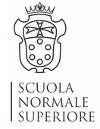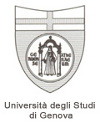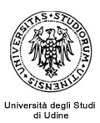University of Udine
DIPARTIMENTO DI STORIA E TUTELA DEI BENI CULTURALI
Coordinator: Denis VivaComputer scientists: Giulio Andreoletti
Scientific committee: Alessandro Del Puppo, Flavio Fergonzi, Donata Levi, Denis Viva
Collaborators:Giorgia Gastaldon
Cataloguers:Jennifer Coffani, Federica Ellena, Claudio Venturato
Interns:Isabella Brezigar, Anna Boscolo Gnolo, Giada Centazzo, Giosuè Ceresato, Martina Ferrari, Bianca Grassi, Emanuela Perra, Lara Spagnolli, Giulia Toffoletti
In the general framework of this reasearch, the B Unit of the University of Udine will deal with the digitizing of some art reviews collection, from 1945 up to 1980. This kind of primary sources becomes irreplaceable in order to reconstruct the artistic events of the Second Post-World War period, one of the most revelant for Italian Art History considering its international achievement. The reviews probably are the only dynamic document able to bear witness of the vitality and the fast development of movements and trends during this hectic period. Based on their Futurist precedent, these artistic periodicals turned into a tool for promoting the taste, the theories and the "militant" Aesthetics of those artists and critics gathered round groups and new avant-gardes. These reviews coped with the mass media which usually reserve a conservative and marginal space to Visual Arts, by working on their home ground: the Press. So they experienced an alternative relation between Text and Image in a moment of slow decay of Formalist approach to artworks.
A digitizing campaign for these reviews is especially justified when preserving their original and unabridged size and aspect:
1) Over and above their theorical and textual content, the Art periodicals contain period pictures of artworks and other information useful to understand the art system of that time: exhibition reviews; art advertising; short news; and so on.
2) The literature on this topic has pointed out the needing to digitize the whole and original collection of each periodical because of the strict connection between Art Graphic and Poetics (Form and Content): Gaia Salvatori, Maria Teresa Roberto and Gianni Contessi (in Riviste d´arte fra Ottocento ed età contemporanea: forme, modelli, funzioni, curated by Gianni Carlo Sciolla, Skira: Milano 2003, p. 283-310 ); and the recents Marina Giordano´s and Giuliano Sergio´s essays, published on-line (severally http://www.unipa.it/tecla/rivista/2_rivista.php; http://www.palinsesti.net/index.php/Palinsesti/article/view/21/26 ).
Since 1945, the publishing History of artistic reviews have taken place in two moments. From 1945 up to 1965, it is characterized by the rising of "underground" initiatives without professional publishers. The artists and critics engaged in debating are the same who promote this phenomenon by choosing the "partisan" and "militant" review as a device without marketing compromises. A second phase (1960-80) had overlapped and followed the first: the art reviews came back to a more professional status that increasingly marginalized the "undergroung" scene. This alternation didn´t come without a continuity, whereas the professional reviews inherited the previous graphic, semiotic and media solutions concering the relation between images and texts. During the 60s, this professional turn of the "militant" paradigm of periodicals coincided with the extension of the audience for the new avant-gardes, so that a new niche of Italian readers appeared and pulled in new pioneering publishers. Also this turn entailed the definitive crisis of every kind of Formalism, from Modernism to Benedetto Croce´s "Pura visibilità": the attention was drawn from artwork to debate -especially concerning the connection between Art and Society- leaving to the artists the role to explain and promotes their works by means of interviews and photographs. It´s not by chance that the textual part of these reviews became predominant around 1968 and it restored its balance (images/texts) during the following decade. Therefore, the task of digitizing some of these reviews aims at verifying and investigatin this development of Italian periodicals in the second half of the XXth Century. Eleven reviews were selected from the periodical index available from literature: Flavio Fergonzi´s lexical index (Lessicalità visiva dell´Italiano: la critica d´arte contemporanea 1945-1960, Accademia della Crusca -Scuola Normale Superiore: Firenze -Pisa 1996, 2 voll.) Giorgio Maffei´s list of "underground" and "militant" reviews (Riviste d´arte d´avanguardia: esoeditoria negli anni Sessanta e Settanta in Italia, Bonnard: Milano 2005).
Two feasibility criteria are determinant for selecting the periodicals of the first phase (1945-60): the first is their availability from the libraries which joined this project providing their periodical heritage (the universitarian libraries of the four unities and the Library of MART in Rovereto) -other agreement could be possible with the libraries "Braidense" in Milan, "Biblioteca della Soprintendenza speciale" of GNAM in Rome della GNAM, and the Biennale Archive in Venice (ASAC)-; the second is the lack of any copyright problems. Concerning the contents, the selected reviews are characterized by the goal of bringing up to date the Italian cultural context, by a partisan attitude and an innovative approach to visuality aimed to experience new connections between Image and Text:
"Arti Visive"13 issues, 1952-57. Founded in Rome by the Gruppo Origine. Among contributors Ettore Colla, Emilio Villa, Alberto Burri. It supported Abstract and Multimedia ("polimaterismo") Art. Available from the Library of MART in Rovereto, reprinted without copyright.
"Il Gesto. Rassegna internazionale delle forme libere", 4 issues, 1955-59. Founded in Milan by the Gruppo Nucleare. Among contributors Lucio Fontana, Enrico Baj, Gillo Dorfles. Available from Braidense, GNAM and ASAC.
"L´Esperienza moderna", 4 issues, 1957-59. Edited by Achille Perilli, writings and works of Gastone Novelli, Nello Ponente. Founded in Rome, this review is fundamental for its practical inquiries and for understanding the late Informel. Available from MART.
"Appia Antica", 2 issues, 1959-60. Founded and edited by Emilio Villa in Rome, its main promoter. It documents the transition, in Rome, from Informel to new dada and pop poetics. il passaggio a Roma dall´Informale alle nuove poetiche dada e pop. Available from MART.
"Azimuth", 2 issues, 1959-60. Linked to the Azimut Gallery, founded by Piero Manzoni, Enrico Castellani and Agostino Bonalumi. It marked the farewell to informel and the beginning of an abstract art that overcomes the traditional distinction between Painting and Sculpture. Available from MART, reprinted without copytight.
The digitizing of these periodicals is not only necessary for their unquestionable historical value, but also for their preservation as cultural and book heritage. First of all their low-budget production and their refusal of professional publishers mean the use of cheap supports -today very perishable. Secondly the irregular periodicity, the low press run and circulation are the reasons of their rarity among libraries and archives.
On the contrary, the problems concerning the digitizing of the periodicals of the second phase (1960-80) are completely differents. In this case, the presence of a publisher assured a good circulation, a stability in editing, the prolonged and punctual periodicity, so that these reviews are a remarkable field of information and contents in many respects: bulk, quality, time continuity during the years. Rather than to their preservation, the help of information technology and digitizing is necessary to these documents for improving the data mining process. Among the periodicals that were published after 1960, this project selects those examples which clearly inherited many relevant aspects of the "militant" scene of the first fase by turning into a professional politics and attitude: a widen pluralism for the texts; more space for advertising; a part of information in the style of a unbiased and commentary bullettin. Therefore, the reviews selected for the second phase meet the criteria of continuity with the previous period and they correspond to those cases where the publishers distinctly allow our Unit B (see the attachments) the digital reproduction:
A transitional periodical between the two historical phases was "Metro. International Magazine of Contemporary Art", founded by Bruno alfieri. "Metro" had published 17 bilingual issues (from 1960 up to 1970) and it has achieved recognition thanks to the success of Pop Art, whose was one of the first supporter. Among the earlier Italian periodicals which has an international circulation. Its pages proposed the contribution of different generations of artists and critics: Giuseppe Marchiori, Rodolfo Pallucchini, Gillo Dorfles, John Cage, Carlo Belloli, Leo Steinberg, Robert Rosenblum, Giulio Carlo Argan. Available from Fondo Rodolfo Pallucchini at the Library of History in the University of Udine.
"Marcatré: rivista di cultura contemporanea", 30 issues from 1963 up to 1970, represented the continuation of the avant-garde graphic and the mixture between Visual Art and Literature characteristic of the 50´s reviews. Founded by the Gruppo ´63 who curate its interdisciplinary approach and its uptodating. It was edited by prof. Eugenio Battisti and later it passed down to the Lerici publisher. It gathered the Italian intelligencija around topics of general and artistic culture: from Giulio Carlo Argan to Edoardo Sanguineti, form the young generation of critics (Germano Celant, Achille Bonito Oliva, Carla Lonzi) up to Visual Poetry (Lamberto Pignotti, Eugenio Miccini). It has come along with the national debate on neo-avant-gardes, until the rising of 1968´s protest. Rich in proceedings, round-table discussions and interviews. Avalaible from the Art History Department in the Scuola Normale of Pisa.
"D´Ars Agency" was characterized by a more neutral and informative approach, based on a correspondents network who reviews many exhibition. It is one of the most enduring Italian art reviews. Founded in 1959-60 by Oscar Signorini and still published. Contributors_ Pierre Restany, Enrico Crispolti, Cesare Vivaldi and others who often defended the contemporaneous trends without a great recognition among critics. It was one of the first examples of art bulletin, ispiring the following cases of "Flash Art" or "NAC", more biased. The digitizing includes 100 issues from 1960 up to 1970, available thanks to the onlus Foundation (www.fondazionedars.it ).
"NAC. Notiziario d´Arte Contemporanea" represents a journal of debate and thematic elaboration. Founded by Francesco Vincitorio in 1968. It alternated a punctual information with thematic issue, based on the example of "Marcatré", but with a plainness graphic. The major part of art historian academics (from Filiberto Menna to Rossana Bossaglia) participated to its discussions, especially about the relation between Art and Ideology. Two series and 80 issues: the first without copyright (1968-69), the second (1970-74) available thanks to the Edizioni Dedalo (publisher of this review since 1970). Available from the MART in Rovereto and the Normale in Pisa.
"Data. Dati internazionali d´arte", published by Prearo from 1970 until 1978, 32 issues with color reproductions. It gets growth the standard of the art periodical. An international review which alternates pages designed by the artists to essays and news. Founded by Tommaso Trini, it joined a depth glance to actuality with a pluralist attitude. The review had its role during the transition from ideological movements, as Arte Povera and Conceptual Art, to Postmodern and Trans-avantgarde. The digitizing will be possible thanks to the permission of publisher Prearo.
As the description of each review digitized clarifies, the selected periodicals not only allow to re-write an history of the art publishing but an overview of Italian Art in the second post-world war period. The choice -by the Udine´s Unit- to study this objects and period is due to ist competence in this field as the activities of the Department in Art History and preservation of Cultural Heritage shows: on one hand the skill in digitizing field; on the other hand a wide investigation on this period carried on by its professors, researchers and especially its doctoral candidates. In the first field we can point out the activity of the LIDA (http://lida.uniud.it/progetti/ARISTOS), the laboratory for digitizing of this Departement, and the involvement in the 2008 PRIN project, supported by the MIUR, concerning the representation of Contemporary Art in periodicals not specialized in Art in the same period (La moltiplicazione dell´arte e le sue immagini. La cultura visiva in Italia nell´epoca della sua riproducibilità tecnica). Moreover, the Department is characterized, among the Italian universities, by its inclination towards the study of Art History post 1945. In the last six years, ten Phd were devoted to the Italian Art History of this period under the tutoring of professors Flavio Fergonzi and Alessandro Del Puppo: already completed the dissertations of Gianni Sirch, Elda Danese, Denis Viva and Fabio Belloni; soon completed the dissertation of Gianni Rubino; underway Emanuela Pezzetta, Roberto Del Grande, Giorgia Gastaldon, Giulia Giorgi and Giulia Toffoletti.
Concerning Udine´s Unit, the project will be divided up in three phases. After a preparatory coordination between the four unities in order to define the standards of digitizing and filing, the first phase will deal with the concrete digitinz of the selected reviews: a whole of 250 issues. Part of the second and third years will be dedicated to the loading of the files on the web platform with the consultancy of LIDA and the other unities. The interface will be accessible for the users thorugh a website. There will be two access mode: a query with the index "subject" (artist); "author" (the writer of the article); "title" (the title of the article); otherwise the user could leaf thorugh the ordered issues. The filename extension will be PDF or other extension which joined the Creative Commons Licence. The users have to log in and subscribe the agreement before the consultation in order to obey the copyright laws. The final part of the project will test the usability of the website through some earlier adopter users (the students, for instance). After the conclusion of this project, the University of Udine will organize a meeting for presenting the website.















